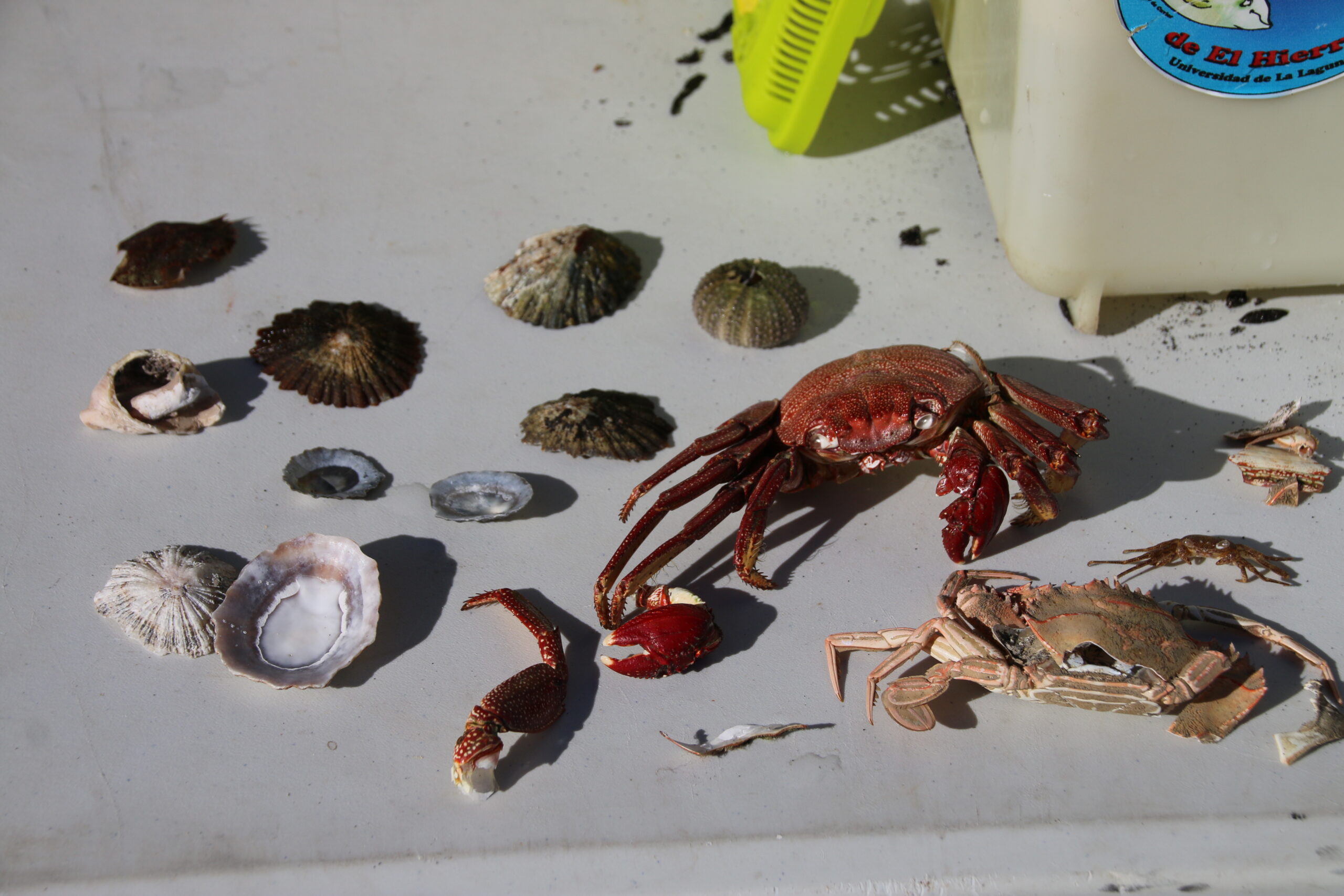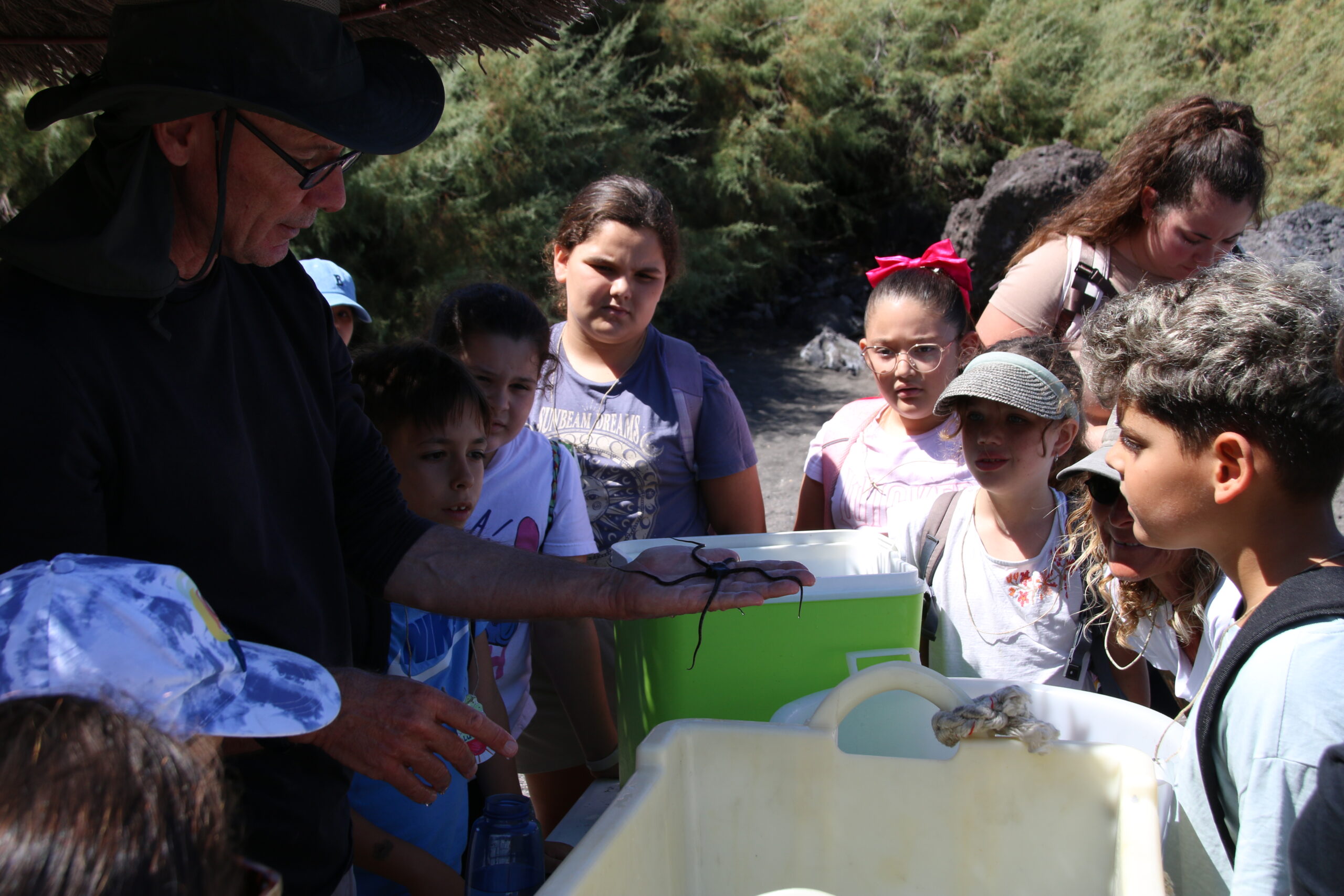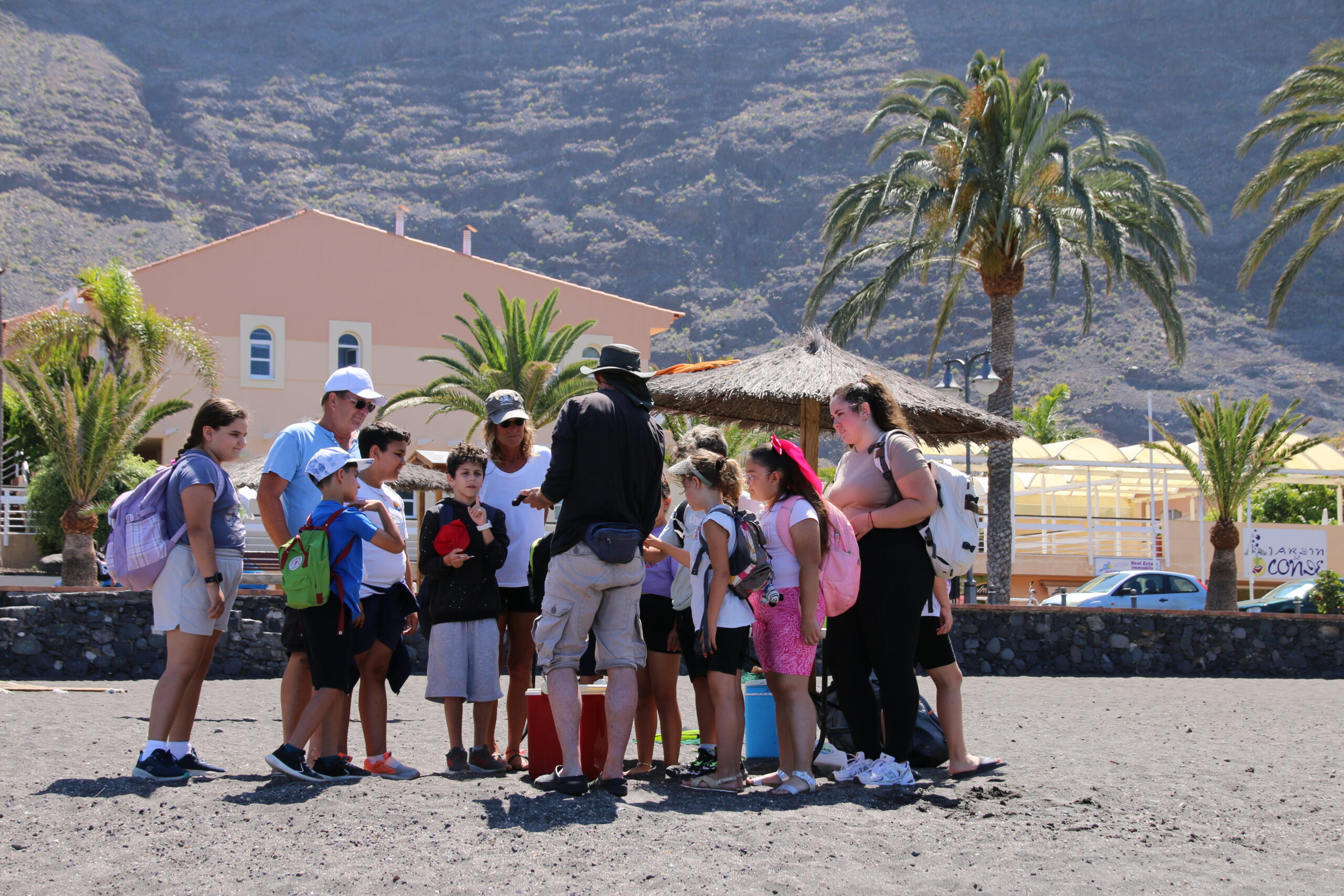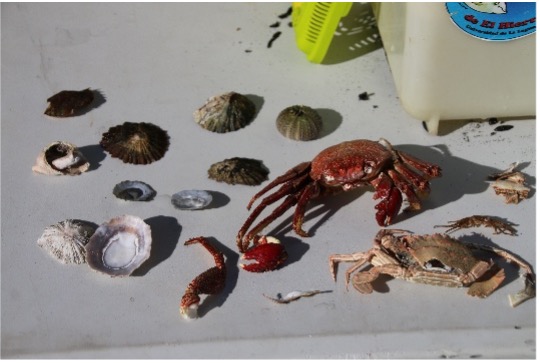Part 2 – Tidepool Station with Marine Biologist Volker Boehlke
Exploring the “Charco del Conde” – Hands-on Marine Research and Conservation
A special highlight of the project week was the tidepool excursion in the “Charco del Conde” — a small intertidal zone rich in biodiversity. This station allowed the children to directly experience often-overlooked, small marine organisms and to discover ecological connections in a vivid, hands-on way. Led by marine biologist Volker Boehlke and supported enthusiastically by Rolf and Nicole from OCEANO Whale Watching, the children set out to explore tiny but important life forms in their natural habitat.
They were able not only to see and touch the animals themselves, but also to learn how they live, how they adapt to their environment, and what roles they play in the marine ecosystem. One of the most striking takeaways was the realization of how delicate this system is — and how heavily it is threatened by human impacts such as pollution, tourism, and climate change. A key goal of this activity was to sharpen the children’s awareness for the details and the seemingly invisible. They learned that marine conservation doesn’t begin with whales and dolphins — it starts with the smallest coastal creatures. These too are vital parts of the ecological balance and deserve our attention and protection. The future lies in the hands of children, and this experience aimed to inspire more responsible actions in their everyday lives.
Some of the animals the children were able to discover:
Porcelain snail, sea urchin, fireworm, sea cucumber, red sea anemone, Sally Lightfoot crab (cliff crab), hermit crab, small rock shrimp, blue spiny starfish, banded starfish, peacock worm, combtooth blenny, and rock goby.




